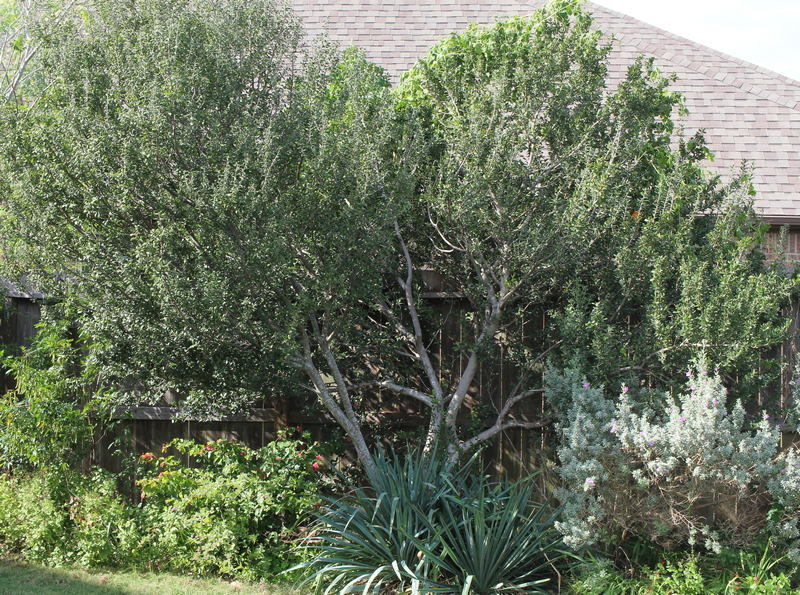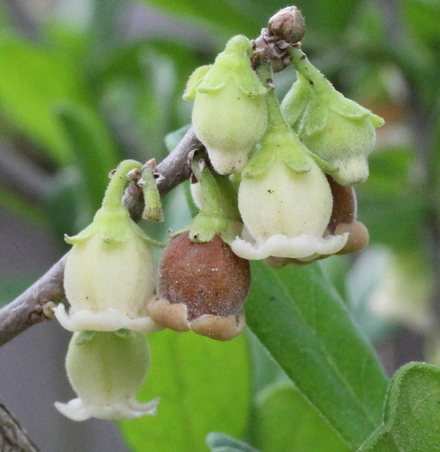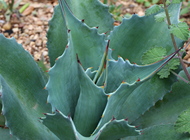 |
Diospyros texana |
 |
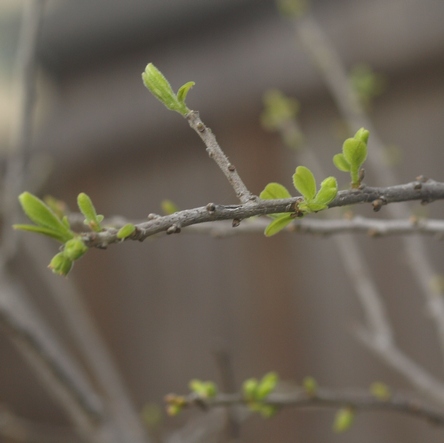
| | Dropped its leaves after the hard freeze of January 2018, but pushed out new ones by mid-February |
| Common name |
Texas persimmon; black persimmon |
| Family |
ebenaceae |
| Life cycle |
tree (Z8b-11)   |
| Flowers |
white |
| Size |
to 20' |
| Light |
sun-part shade |
| Cultural notes |
heat and drought tolerant |
Small tree or large shrub native to Texas, where it survives heat and drought conditions with aplomb. I first learned about the species while visiting Houston's Mercer Arboretum, which has a nice tree-shaped specimen casting dappled shade on its surroundings, and decided I should grow one too. Luckily, a local native plant nursery carried it – I haven't seen it on offer anywhere else.
Female plants produce small black fruit, attractive to wildlife, as well as to humans who don't mind eating the little bit of flesh around the large seeds. Having observed the tree during its first few years in our garden, I've seen no inclination for it to produce fruit – so I decided it must be either a male, or there is no stud around to pollinate the flowers. When I finally got around to observing the flower structure up close, I found out it was the former – our tree produces lots of male flowers (see picture below), and none of the larger female ones. Perhaps I'll find a comely companion for my lonely persimmon knight one of these years...
At maturity, the smooth bark is an attractive feature. Small simple oval leaves.
|
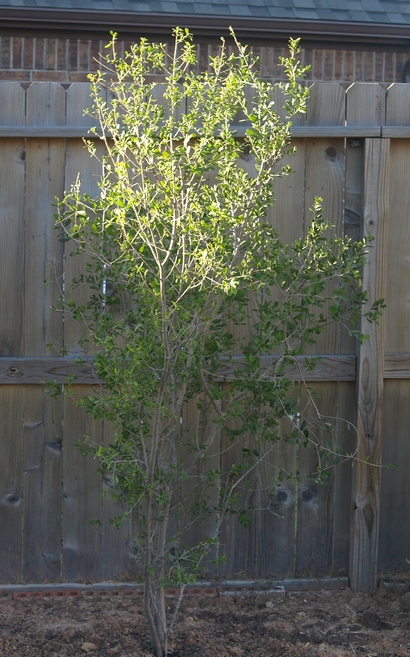
| | Just after planting, October 2017 |
| 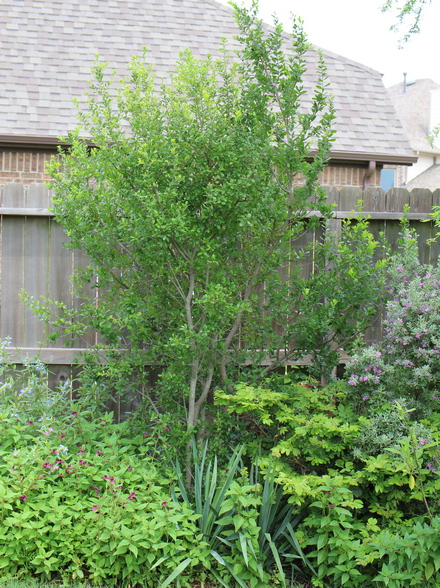
| | After putting on some growth, May 2020 |
|
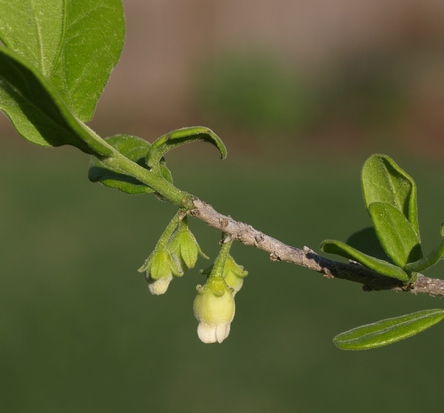
| | Starting to bloom mid-March... |
| 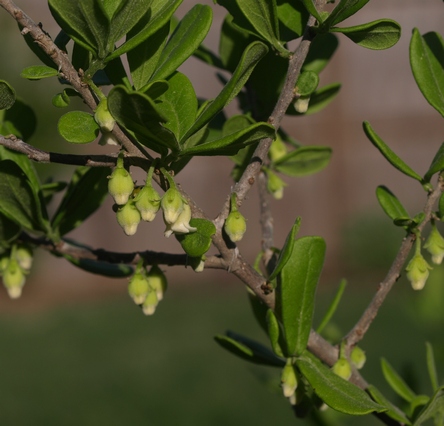
| | ...flowers are numerous but not very showy |
|
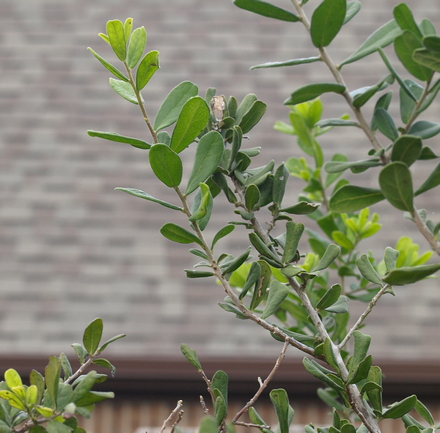
| | Just slight tender spriggy extensions in its first year |
With so many of the plantings in our garden spurting towards the sky in a single season (its neighbor tree, huisache, grew twice as large one year after planting, and the lemon eucalyptus we planted was even quicker to tower high over all its surroundings), our persimmon was more reluctant to grow. In its first year in our garden, it barely extended its reach at all, putting on only the slightest bit of new growth in autumn. I wondered if it would grow faster in future years, and sure enough, it started reaching a little more – but was for years still dwarfed by its huisache neighbor. But the huisache, it died, while the persimmon continued to grow, eventually turning into the handsome multitrunked tree I had admired all those years ago.
|
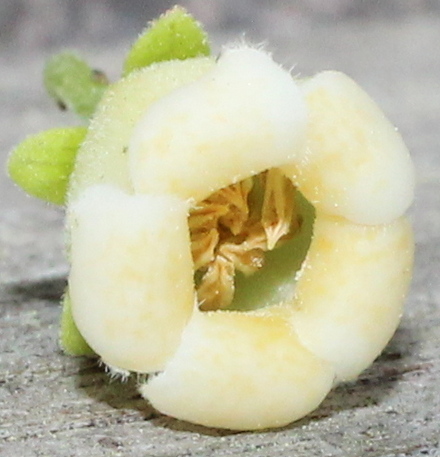
| | Male flower, with only stamens inside |
|
|
In our garden, this plant grows in the following area: left fence border About my plant portraits
PlantLinks to other web pages about Diospyros texana
Some particularly helpful links to other websites | Naturalist Newsletter | Informal account of the features of this species, showing male and female flowers and ripe fruit. |
Visitors to this page have left the following comments| Beverly Howard | Apr 29, 2021 | They are slow growing but worth it. |
I welcome comments about my web pages; feel free to use the form below to
leave feedback about this particular page. For the benefit of other visitors
to these pages, I will list any relevant comments you leave, and if
appropriate, I will update my page to correct mis-information. Faced with an
ever-increasing onslaught of spam, I'm forced to discard any comments including
html markups. Please submit your comment as plain text. If you have a
comment about the website as a whole, please leave it in my
guestbook. If you
have a question that needs a personal response, please
e-mail me.
Last modified:
November 20, 2024
Contact me
|


